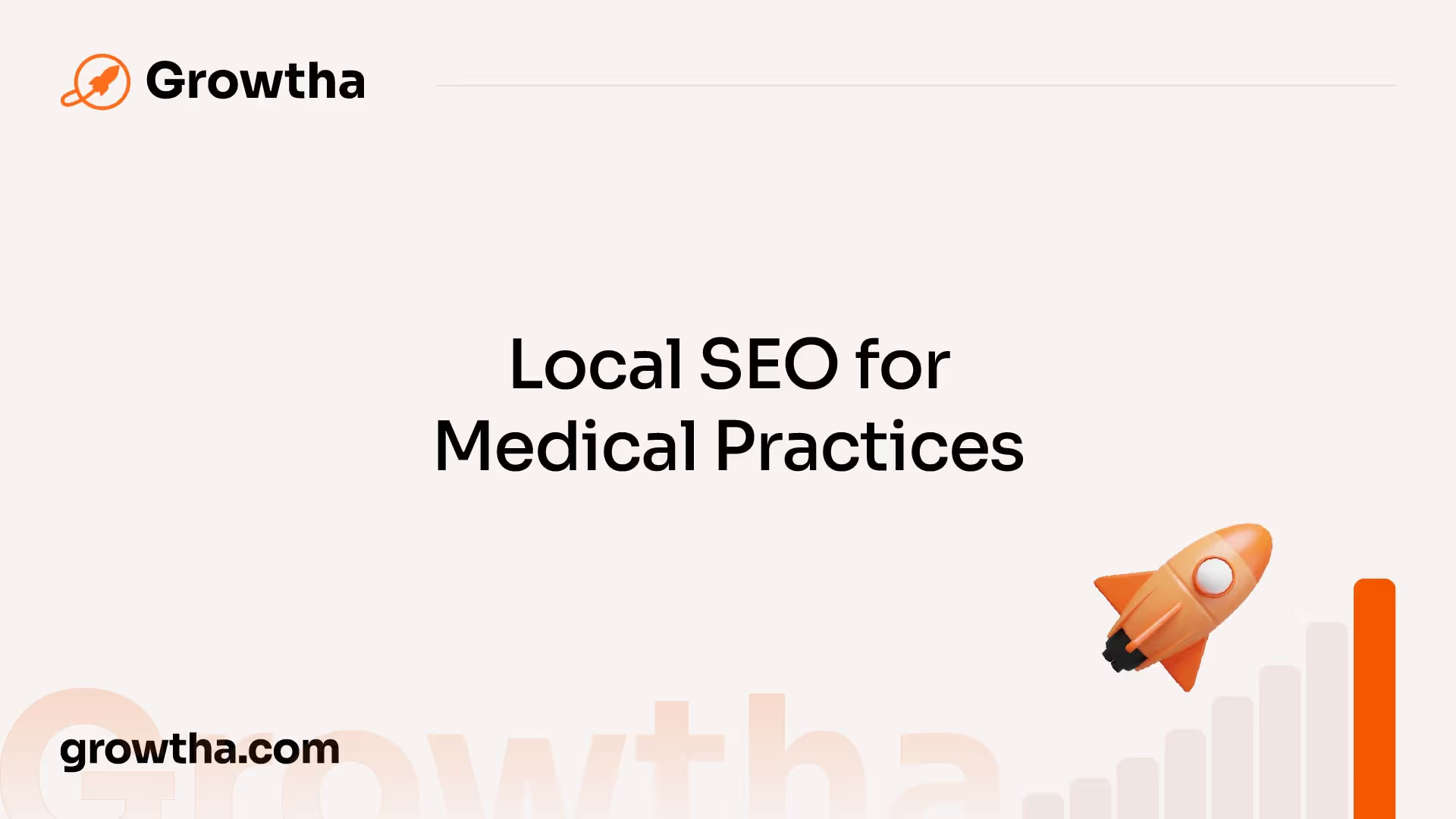Maximizing Clinic Visibility with Medical SEO
It is essential for medical practices to prioritize SEO strategies to enhance their online visibility and reach a wider audience.


Maximizing Clinic Visibility with Medical SEO
Importance of SEO in Healthcare
In the modern digital landscape, search engine optimization (SEO) plays a crucial role in healthcare marketing. It is essential for medical practices to prioritize SEO strategies to enhance their online visibility and reach a wider audience. This section explores the impact of SEO in healthcare and the benefits it brings to clinics.
Impact of SEO in Healthcare

SEO has a significant impact on the online presence and visibility of healthcare providers. When potential patients search for medical services or information, they typically turn to search engines like Google. Appearing prominently in search engine results can greatly increase the chances of attracting new patients to a clinic.
By implementing effective SEO strategies, healthcare providers can optimize their websites to rank higher in search engine results pages (SERPs). This increased visibility can lead to higher organic traffic and ultimately more patient inquiries and appointments. It also enables clinics to establish themselves as authoritative sources of information in their respective specialties.
Benefits of SEO for Clinics
Implementing SEO techniques can bring numerous benefits to clinics and medical practices. Here are some key advantages:
- Increased online visibility: By optimizing their websites for relevant keywords and search queries, clinics can improve their online visibility. This helps potential patients find the clinic's website more easily when searching for relevant medical services.
- Targeted traffic: SEO allows clinics to target specific keywords and phrases that are relevant to their services. This ensures that the traffic they attract is more likely to be interested in their offerings, increasing the chances of converting website visitors into patients.
- Cost-effective marketing: Compared to traditional forms of advertising, SEO is a cost-effective way to market a healthcare practice. It allows clinics to reach a wider audience without the need for expensive paid advertising campaigns.
- Establishing credibility: A high ranking on search engine results instills trust and credibility in potential patients. When a clinic appears prominently in search results, it reinforces the perception that the clinic is reputable and trustworthy.
- Long-term results: Unlike some forms of marketing that yield short-term results, the benefits of SEO can be long-lasting. By consistently implementing effective SEO strategies, clinics can maintain and improve their online presence over time.
Investing time and resources into medical SEO can provide clinics with a competitive edge in the digital realm. By maximizing their visibility in search engine results, healthcare providers can attract more patients, establish credibility, and ultimately grow their practices.
Strategies for Medical SEO

To maximize clinic visibility and attract potential patients online, implementing effective SEO strategies is crucial. These strategies involve various techniques such as keyword research, on-page optimization, and off-page optimization.
Keyword Research
Keyword research plays a fundamental role in medical SEO. By identifying the keywords and phrases that potential patients are using to search for healthcare services, clinics can tailor their website content to match those search queries. This increases the chances of their website appearing in relevant search results.
To conduct keyword research, clinics can utilize keyword research tools to identify high-volume and relevant keywords in the healthcare industry. The goal is to find keywords that strike a balance between search volume and competition. By incorporating these keywords naturally into their website content, clinics can improve their organic visibility and attract more targeted traffic.
On-Page Optimization
On-page optimization refers to the process of optimizing various elements on a website to improve its search engine rankings. It involves optimizing meta tags, headings, URLs, and the overall content of web pages. Here are some key aspects of on-page optimization for medical SEO:
- Title Tags: Including relevant keywords in the title tags of web pages can help search engines understand the content and relevance of the page.
- Meta Descriptions: Well-crafted meta descriptions that incorporate keywords can entice users to click on the search result and visit the clinic's website.
- URL Structure: Creating clean and descriptive URLs that include keywords can improve both user experience and search engine visibility.
In addition to these elements, clinics should focus on creating high-quality, informative, and engaging content. This not only helps with on-page optimization but also establishes the clinic as an authoritative source of healthcare information.
Off-Page Optimization
Off-page optimization involves activities that take place outside of a clinic's website to improve its search engine rankings. The primary focus of off-page optimization is to build high-quality backlinks from reputable sources. Backlinks act as votes of confidence for search engines, indicating that the clinic's website is a reliable and trustworthy source of information.
Clinics can engage in various off-page optimization techniques, such as:
- Guest Blogging: Writing informative articles for other reputable healthcare websites and including a backlink to the clinic's website.
- Online Directories: Submitting the clinic's information to relevant online directories, such as healthcare directories, to increase visibility and generate backlinks.
- Social Media: Sharing valuable content on social media platforms and engaging with the community to generate interest and potential backlinks.
By implementing these off-page optimization techniques, clinics can improve their online visibility and increase their chances of ranking higher in search engine results.
Implementing these strategies for medical SEO can significantly enhance the visibility of clinics in search engine results. By conducting thorough keyword research, optimizing on-page elements, and engaging in off-page optimization techniques, clinics can attract more targeted traffic to their websites and ultimately increase their patient base.
Content Marketing for Healthcare SEO

In the world of healthcare SEO, content marketing plays a crucial role in improving clinic visibility and attracting relevant traffic to a medical practice's website. By creating engaging content and strategically distributing it, clinics can enhance their online presence and connect with their target audience effectively.
Creating Engaging Content
Creating high-quality and engaging content is the foundation of successful healthcare SEO. When developing content for a medical practice's website or blog, it's important to consider the needs and interests of the target audience. Here are some key points to keep in mind:
- Relevant and Informative: The content should provide valuable information related to the medical field, addressing common questions, concerns, or health topics that are relevant to the target audience. This helps establish the clinic as a trusted source of information.
- Keyword Optimization: Conducting thorough keyword research is essential to identify the search terms and phrases that potential patients are using to find information online. Incorporating these keywords naturally throughout the content can improve its visibility in search engine results.
- Readable and Accessible: The content should be written in a clear and concise manner, using language that is easy for the target audience to understand. Using subheadings, bullet points, and short paragraphs can make the content more skimmable and accessible.
- Engaging Formats: Exploring different formats such as blog posts, infographics, videos, or podcasts can help diversify the content and cater to different preferences. Visual elements like images or illustrations can also enhance the engagement and shareability of the content.
Content Distribution
Once engaging content is created, it's important to ensure its wide distribution to maximize its reach and impact. Here are some effective strategies for content distribution in healthcare SEO:
- Social Media: Sharing content on social media platforms allows clinics to connect with their target audience directly. By identifying the social media channels that the target audience frequents, clinics can share their content and engage with potential patients effectively.
- Email Marketing: Building an email subscriber list enables clinics to send regular newsletters or updates to their audience. This allows for targeted content distribution and maintains a direct line of communication with interested individuals.
- Guest Blogging and Influencer Collaboration: Collaborating with influencers or guest blogging on reputable websites within the medical industry can expand the reach of the clinic's content. By leveraging the existing audience of these platforms, clinics can tap into new networks and gain exposure to a wider audience.
- Online Directories and Industry Associations: Submitting content to online directories and industry-specific associations can help clinics gain visibility within their niche. These platforms often have a targeted audience interested in medical information, making them ideal for content distribution.
By creating engaging and informative content, and strategically distributing it through various channels, medical practices can boost their visibility, attract more traffic to their website, and establish themselves as trusted authorities in their field. Effective content marketing is a key component of successful healthcare SEO strategies.
Local SEO for Medical Practices

In the realm of healthcare SEO, local visibility is crucial for medical practices. By implementing local SEO strategies, clinics can enhance their online presence and attract patients within their specific geographic area. Two key components of local SEO for medical practices are local listings and geotargeted keywords.
Local Listings
Local listings play a significant role in improving the visibility of medical practices in local search results. These listings, also known as online directories, provide essential information about the clinic, such as its name, address, phone number, and website. By ensuring that accurate and consistent information is listed across various platforms, clinics can enhance their local SEO efforts.
It is essential for medical p ractices to claim and optimize their profiles on popular local listing platforms such as Google My Business, Yelp, and Healthgrades. By claiming these listings, clinics can control the accuracy of their information and engage with patients through reviews and ratings. Additionally, having a well-optimized Google My Business profile can also increase the chances of appearing in the local map pack, which is highly visible in local search results.
To optimize local listings, clinics should:
- Provide accurate and up-to-date information, including the clinic's name, address, phone number (NAP), website, and business hours.
- Select the appropriate categories that align with the services offered by the clinic.
- Encourage patients to leave reviews and respond to them promptly.
- Upload high-quality images that showcase the clinic's facilities and staff.
Geotargeted Keywords
Incorporating geotargeted keywords into a medical practice's website content is a powerful strategy to improve local SEO. Geotargeted keywords are specific to a particular location and help search engines understand the clinic's relevance to a specific geographic area. By optimizing website content with these keywords, clinics can increase their visibility in local search results.
When conducting keyword research, medical practices should focus on identifying relevant geotargeted keywords. These can include the name of the city or neighborhood where the clinic is located, as well as specific terms that potential patients in the area may use when searching for healthcare services. For example, a clinic in New York City may target keywords like "New York City medical clinic" or "Manhattan healthcare provider."
By strategically incorporating geotargeted keywords into website content, including meta tags, headings, and page content, medical practices can improve their chances of appearing in local search results. However, it's important to strike a balance between optimization and natural-sounding content to provide a positive user experience.
By implementing local SEO strategies such as optimizing local listings and incorporating geotargeted keywords, medical practices can maximize their visibility in local search results. These efforts can ultimately attract more patients from the surrounding area and contribute to the success and growth of the clinic.
Measuring SEO Success

When it comes to implementing SEO strategies for medical clinics, it's essential to track and measure the success of your efforts. By analyzing data and key performance indicators (KPIs), you can gain valuable insights into the effectiveness of your medical SEO campaign. This section will explore two crucial aspects of measuring SEO success: analytics tracking and key performance indicators.
Analytics Tracking
Analytics tracking is a fundamental component of measuring the impact of your medical SEO efforts. By utilizing tools like Google Analytics, you can gather valuable data about your website's performance, user behavior, and organic search traffic. This data provides insights into how your website is performing, which pages are driving the most traffic, and how users are interacting with your content.
Key metrics to monitor through analytics tracking include:
- Organic Traffic: This metric shows the number of visitors who arrived at your website through organic search results. It helps you understand the effectiveness of your SEO strategies in driving targeted traffic to your clinic's website.
- Bounce Rate: Bounce rate indicates the percentage of visitors who leave your website after viewing only one page. A high bounce rate may indicate that visitors are not finding the information they need or that your website needs improvement in terms of user experience or content relevance.
- Conversion Rate: Conversion rate measures the percentage of website visitors who take a desired action, such as filling out a contact form or scheduling an appointment. Tracking conversions allows you to evaluate the effectiveness of your website in converting visitors into potential patients.
- Time on Page: This metric reveals how much time visitors spend on each page of your website. Longer time on page generally indicates higher engagement and interest in the content, while shorter durations may suggest that the content needs improvement or that visitors are not finding what they're looking for.
Key Performance Indicators
Key Performance Indicators (KPIs) are specific metrics that indicate the success of your medical SEO campaign. These metrics align with your clinic's goals and help you assess the impact of your SEO efforts. Some common KPIs for medical SEO include:

By regularly tracking these metrics and analyzing the data, you can make data-driven decisions to optimize your medical SEO strategies and improve the visibility and success of your clinic's website. Remember that SEO is an ongoing process, and continuous monitoring and adjustment are essential to achieve and maintain optimal results.
Trends in Healthcare SEO
As the digital landscape continues to evolve, it's important for healthcare providers to stay up-to-date with the latest trends in medical SEO. This ensures that clinics can maximize their online visibility and reach their target audience effectively. Two key trends in healthcare SEO are voice search optimization and mobile-friendly websites.
Voice Search Optimization
With the rise of voice assistant devices and virtual assistants on smartphones, voice search has become increasingly popular. People are now using voice commands to search for information, including healthcare services. To capitalize on this trend, healthcare providers need to optimize their websites for voice search.
When optimizing for voice search, it's important to understand the nature of voice queries. Voice searches are often longer and more conversational compared to typed searches. Therefore, incorporating long-tail keywords and natural language into your content is crucial. Consider the questions your target audience might ask and provide detailed answers in your content. This helps search engines understand the relevance of your website to voice queries and improves your chances of appearing in voice search results.
Additionally, optimizing for local search is essential for voice search optimization. Many voice searches are location-based, with users looking for healthcare providers in their area. Including geotargeted keywords in your content and optimizing your Google My Business listing can help boost your visibility in local voice search results.
Mobile-Friendly Websites
The increasing use of smartphones for internet browsing has made mobile-friendliness a crucial factor in healthcare SEO. A large portion of users now access healthcare information and search for medical services on their mobile devices. Therefore, having a mobile-friendly website is vital for providing a positive user experience and improving your search engine rankings.
A mobile-friendly website is designed to adapt to different screen sizes and resolutions. It ensures that your content is easily readable and navigable on smartphones and tablets. This not only enhances the user experience but also signals to search engines that your website is mobile-friendly, which can positively impact your search rankings.
To optimize your website for mobile devices, consider the following:
- Use responsive web design: This approach automatically adjusts your website's layout based on the user's device, providing an optimal viewing experience across all screen sizes.
- Optimize page load speed: Mobile users expect fast-loading websites. Compress images, minimize code, and leverage caching techniques to improve your website's performance.
- Implement mobile-friendly navigation: Simplify your website's navigation menu and ensure that buttons and links are easily clickable on smaller screens.
By prioritizing voice search optimization and mobile-friendliness in your medical SEO strategies, you can position your clinic for success in the ever-evolving digital landscape. These trends not only enhance your online visibility but also provide a seamless user experience for patients seeking healthcare information and services.
References
[1]: https://seo.ai/blog/seo-for-medical-practices
[2]: https://www.linkedin.com/pulse/3-core-components-strong-healthcare-seo-strategy-digitalismedical
[3]: https://kanopi.com/blog/healthcare-content-marketing/
[4]: https://www.linkedin.com/pulse/role-local-seo-enhancing-medical-practice-visibility-intakeseo-w5yaf
[5]: https://digitalismedical.com/blog/local-seo-for-medical-professionals/







